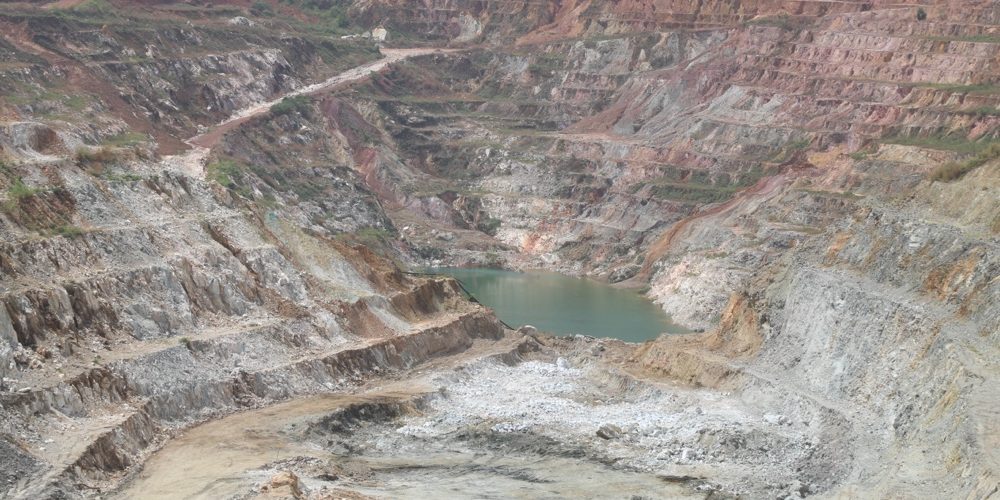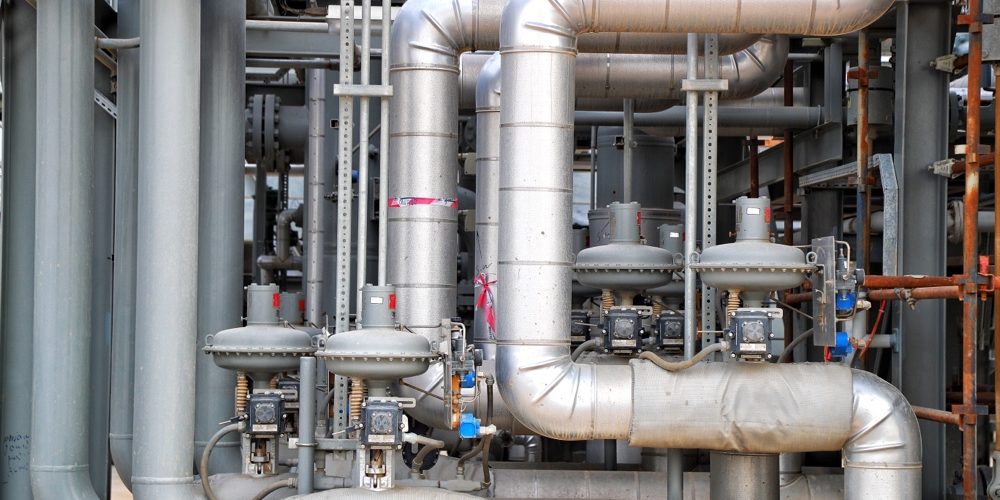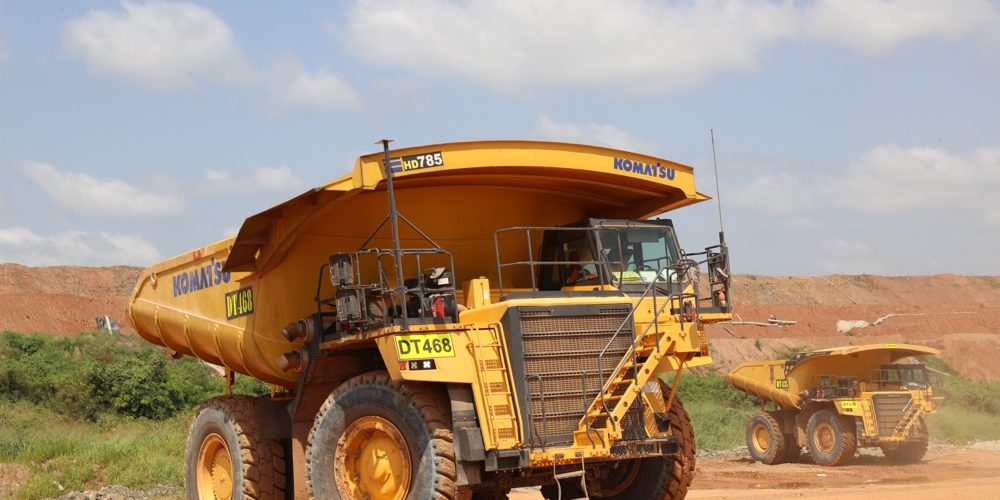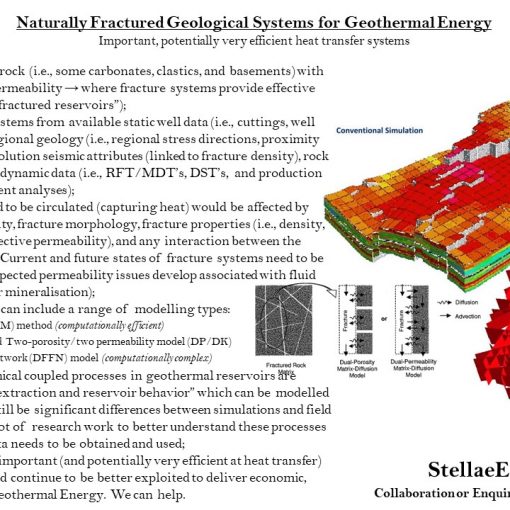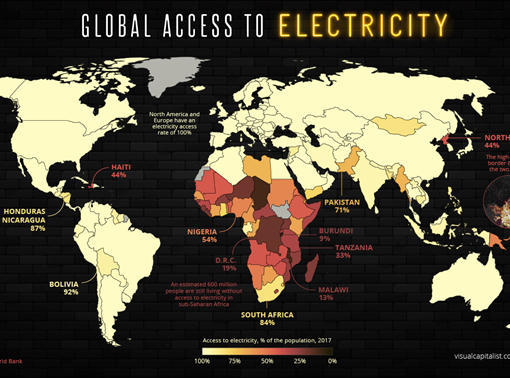The Upstream and Mining industries have been working to accommodate sources of Renewable Power generation for remote facilities including Solar Photovoltaic (PV) Power. Onshore energy facilities have been quite successful deploying Solar PV Power and recently offshore facilities have begun to deploy more of these systems, sometimes combined with wind turbines. Historically unmanned offshore platforms had small solar power battery systems for powering safety and communications equipment, but now increased systems capacities combined with Energy Storage Systems are being used.
For every amount of power generation generated from Renewables, a remote facility saves oil and gas production which is able to be exported and monetised. Reducing conventional power generation also reduces the carbon footprint of the facility with less GHG emissions.
Offshore Facilities

The pictures above show unmanned, decomplexed Shell Leman Bravo and Caravel platforms and the Ithaca Jacky platform with Renewable energy packages. The Shell Leman Bravo platform (left) has Hybrid Solar PV (152 panels, 3 containers including battery ESS) provided by VONK (~85% planned) with small diesel backup generator (~15% planned). The Shell Caravel platform (middle) has Solar PV (68 panels, 51 kW), two Wind turbines (2 x 6kW, 7m tall, 3.5m diameter blades), and two 6800 Ah battery packs. The Ithaca Jackie platform (right) has the Wood / Amphibious 8.5 kWh EnergyPod with Solar PV (3.5 kW) / Horizontal Helical Wind Funnel (5 kW)/ 2 x 24 2V 900Ah (86 kWh) PowerSafe SBS EON battery pack (Thin Plate Pure Lead (TPPL) / Glass Mat technology). The use of hybrid systems with Solar PV plus Wind Power is a good offshore solution with typically less wind intermittency.
It is obvious that platform space is at a premium so companies are beginning to consider “off platform” alternatives for more power options. One “off platform” idea is floating Solar PV systems. These systems have been successfully developed and deployed in onshore reservoirs and lakes and some sheltered inshore locations.

Various companies have been developing versions suitable for offshore locations with more severe met-ocean conditions. There is the possibility to have a hybrid versions with floating wind turbines also.

Onshore Facilities
Onshore Upstream and Mining facilities are well established users of Solar PV Power generation. Typically there was significant amounts of conventional power generation online (e.g. diesel power generators) to help accommodate the intermittency of Solar radiation as well as to help meet peak demand. Now with larger and more efficient Energy Storage Systems, the percentage of energy generated from Solar can be increased with the inertia of the ESS for local grid stability due to intermittency.

Remote Upstream facilities usually have the benefit of larger amounts of land available to support the installation of large Solar PV systems.

For remote mining facilities which operate 24/7/365, hybrid microgrids are attractive options, with current energy costs around 30% of OPEX. Combining Solar PV power with some amount of Conventional Power Generation reduces energy costs, reduces the carbon footprint, and hedges against fuel price swings. Remote locations would have had high fuel transportation costs with associated carbon footprint to supply the fuel. Typically Renewable power systems have lower operating and maintenance costs also.
Gold Fields Agnew Gold Mine was the first mine in Australia to be powered by a hybrid microgrid with an 18 MW Wind farm, a 10,000 panel 4 MW Solar PV farm, and a 13 MW / 4 MWh Battery Energy Storage System (BESS). 16 MW of conventional gas power generation is currently in use with plans to study increased renewables and energy storage to reduce this cost and carbon footprint.
The Essakane Gold Mine in Burkina Faso has Africa’s largest mine hybrid microgrid with Conventional Power Generation (55 MW Wärtsilä HFO engines) and Solar PV (130,000 panels, 15 MWp). The transition to processing harder ore (10% initially, increased to 90%) meant that energy consumption at the Essakane mine increased from ~14 GWh/month to ~26 GWh/month which required the increased power generation provided by the Solar PV system.
As discussed in previous articles, Solar PV systems have intermittency from clouds, precipitation, and night-time, but Upstream and Mining Facilities would be working 24/7/365 regardless of the solar radiation, so long-duration energy storage has to be provided at scale – the full energy demand has to be provided with the storage system, otherwise some form of Conventional Power Generation would be required with the corresponding GHG emissions and the fuel cost. Small to medium facilities could use some form of Chemical Battery Energy Storage System (i.e. Lead-acid, Lithium-ion, or Redox Flow) and medium to large facilities could use either Hydrogen or Pumped Hydroelectric Energy Storage. Other types of ESS exist but are less common, but development work is ongoing since energy storage is so critical to make Renewables effective and stable.
Hybrid Solar PV – Pumped Hydroelectric Energy Storage (PHES) using Mine Sites
A unique opportunity may be the use of certain types of former mining sites as part of Hybrid Solar PV – Pumped Hydroelectric Energy Storage (PHES) Developments. Pumped storage hydroelectricity power projects are extremely efficient, cost effective means of long duration energy storage and have been used worldwide for over one hundred years. Currently Europe has ~46,000 MW of pumped storage hydro, China has ~32,000 MW, Japan has ~28,000 MW, and the US has ~22,600 MW – and many more locations are planned, usually associated with national grid energy storage. A good website provides details of existing and potential pumped hydroelectric energy storage locations internationally which could be paired with intermittent Renewables like Solar or Wind.[1] These sites offer an attractive feature to Hybrid Solar PV energy developments which need long duration energy storage to avoid intermittency issues (like recently experienced in California with curtailments and black-outs).
Pumped hydroelectric storage facilities store energy in the form of water in an upper reservoir, pumped from another reservoir at a lower elevation. During periods of Solar radiation intermittency (e.g. night-time), power would be generated by releasing the stored (higher elevation) water through turbines in the same manner as a conventional hydropower station. During periods of good Solar power production (usually day-time), the higher reservoir would be recharged by using Solar PV electricity to pump the lower elevation water back to the upper reservoir.

The first re-use of open pit mining site excavations as part of a pumped hydro electricity storage facility (PHES) is being progressed in Australia. At the disused Kidston Gold Mine in Northern Queensland, Genex Power Limited plans to develop the world’s first integrated Solar PV and PHES project.[2] The full project is planned to consist of: (Stage 1) 50 MW Solar PV power; (Stage 2) Hybrid 250 MW (2,000 MWh) PHES + additional 220 MW Solar PV power; and (Stage 3) 150 MW Wind turbine power. The PHES transforms two very large mine pits into storage reservoirs by filling them with water. The PHES will provide long duration energy storage (LDES) support to the Renewable Energy sources during intermittent periods by releasing water from the upper reservoir into the lower one, passing through turbines. During day-time, when the sun is shining, the water will be pumped back from the lower to the upper reservoir, using Solar power.[3]
This hybrid scheme is an impressive demonstration of implementing PHES with existing topographical features – normally some amount of elevated terrain would be needed, but here the use of mine pits fills the same function. There are depleted mine pits in Africa, Central and NE Australia, and other international locations that may be able to be used in a similar manner for LDES. Other types of mines are being investigated for PHES in Germany including underground coal shafts[4] and salt caverns[5]. As the market penetration of Renewables increases, it is absolutely essential to implement LDES to avoid having to maintain Conventional Power Generation backups online.
Land Requirements for Solar Power
Normal Solar PV power generation for residential and commercial microgrids could rely on the majority of their power demand in the day and evening, so excess energy production could be stored in the day-time to be used in late afternoon and evening. Night-time energy demand was typically much lower and was often accommodated by Conventional Power Generation (or electricity supply from the main grid if connected).
For remote industrial facilities like Upstream and Mining, the energy demand would typically be 24/7/365, so 2×100% Solar PV power would need to be generated in the peak solar radiation day-time (depending on location factors and panel tracking systems) and then Energy Storage would have to provide power all through the night-time if the goal was to eliminate Conventional Power Generation fuel costs and GHG emissions. Eliminating Conventional Power Generation is much more difficult for continuous industrial power demand scenarios to achieve 100% RE.
Solar PV power generation has typically been ~15-25% of the nominal system capacity due to efficiency and intermittency factors, so the nominal capacity has to be upsized (~5x) accordingly. If Pumped Hydroelectric Storage (PHES) is unavailable, the amount of required long-duration “base” energy storage may be too much for batteries (maybe high capacity Redox Flow in the future) so the main energy storage medium could be hydrogen.[6] Batteries appear to still be useful for “inertia” and peak loads as part of a Hybrid ESS with hydrogen. CAPEX will be higher for a 100% RE with ESS compared to Conventional Power Generation but OPEX will be significantly cheaper (no fuel cost and no complex rotating equipment to maintain). Comparative economics will also be influenced by regulatory requirements, Carbon taxes, and the relative ability to attract ESG funding / finance.
Even if an Upstream or Mining facility was located in a remote, less inhabited area, it is likely that land use would be an issue to be considered. Solar PV facilities can require substantial amounts of land and the potential alternate use of the land may be affected. A rule of thumb is every 1 MW of nominal Solar PV capacity requires about 2.5 acres (1 hectare) including panels, storage, and additional equipment. So for Upstream or Mining Facilities, the following land areas may be required:



Solar PV Panel Selection
Solar PV Panel technologies have been fairly constant for some time, but recently some technology improvements have begun to be available. Monocrystalline and polycrystalline silicon solar cell efficiencies have been improved slowly from 22% up to perovskite-on-silicon solar cells recently with 27.3%.[7] Bifacial solar panels are able to absorb energy on both sides so that up to 11% more energy is possible to be captured.[8] The selection of Solar PV systems needs to also consider mounting fixture types (fixed, single axis tracking, or dual axis tracking) which can increase the energy captured by longer duration solar radiation tracking. The nominal duration at peak load then would need to be adjusted to account for intermittency and solar radiation available at the particular location’s latitude.
The types of conventional solar PV panels range from 270W to 500W, with 380W being a very common model.[9] Future installations may begin to use more of the 500W panels. The tables below show how the type of mounting fixture can influence the energy captured over the specific time period.

Long-Duration Energy Storage Systems
A previous article covered this topic, so we will only summarise the details here. Upstream or Mining Facilities who wish to operate 100% Renewable Energy will have to have much longer duration energy storage. Solar PV power will be limited to certain day-time periods, so in order to provide the demand load 24/7/365, the energy storage will have to be significantly larger than other residential or commercial microgrid systems. Multiple days worth of energy would ideally be able to be stored to account for Solar intermittency. Where environmental conditions permit, the addition of Wind power might help, but Wind intermittency is significant also with variable weather patterns.
The earlier table with some examples of Upstream and Mining facility power requirements and areas showed some idea of potential long-duration energy storage. Studies have shown that Hybrid ESS with a combination of batteries (typically Li-ion) and hydrogen systems (electrolysis + storage + fuel cell) might be the most economic.[10] The Li-ion batteries can react and handle “peak” demand loads quite efficiently, whilst the hydrogen systems can handle “base” demand loads (above the direct Solar PV power loads). The batteries would provide the “inertia” needed for grid stability. Using hydrogen as a base load storage medium would optimise the equipment sizing. The Solar PV system would have to be significantly oversized to provide for intermittency and to ensure surplus power was available to charge the Energy Storage Systems.
Hydrogen Energy Storage Systems are a good way to also begin to make the energy transition for other users. Scaled up production and storage of hydrogen would be possible to allow other users to benefit from the hydrogen itself. Vehicles including heavy transport and equipment are good options to be eventually switched to hydrogen from conventional hydrocarbon fuels.
Multiple Uses of Land under Solar PV Panels
One of the challenges to widespread deployment of land for Solar Farms is the fact that it may preclude the use of the land for other purposes such as agricultural. If the Solar Farm was located in a desert or arid region this probably did not matter, but in some other countries this could be an issue. Fortunately there is a lot of effort to come up with alternate land uses (“agrophotovoltaics”) that can co-exist with Solar Farms on the same land.[11]

It is not surprising that cows and sheep like shade – they do not want to stand out in the fields all day long and overheat. Milk production from cows is increased 3% by the availability of shade.[12] Solar PV Panel supports may have to be higher off the ground which has a cost increase, but the animals eating grass (and weeds) helps minimise ground cover maintenance costs and air cooled solar panels away from the hot ground are ~2.6% more efficient.

Another use of land under and between Solar PV Panels is wildflowers to support endangered pollinators (e.g. bees).[13] A commercial side product is honey! “Managed honeybee colonies used for honey production declined from 5.7 million in the 1940s to around 2.7 million today” (in the US) and pollinators are important to many types of adjacent crop fields. Solar power could also be used for pumping water to irrigate the agriculture.
Conclusions
Solar PV Power has a potential role to support the Upstream and Mining Industries as part of the Energy Transition. The challenge to utilise 100% Renewables is significant due to the 24/7/365 nature of the work, but it is possible. Power demand curves are unlike residential and commercial since they are fairly flat on a continuous basis. With intermittent energy production from Solar PV Power, this means that all the power must be generated and stored in the peak day-time solar radiation time periods. The preceding table showed that for a nominal energy requirement of 25 MW, the Solar PV facility would have to be sized (2 x 100% / ~20% efficient= 10 times =) 250 MW. Fortunately the cost of Solar PV panels has dropped by ~90% over the past decade to ~$0.20/Watt in Q3 2019.[14] Further cost reductions are forecast as well as improvements in PV efficiency and energy generation. The initial CAPEX could be significant, but life cycle costs are more attractive with no fuel costs and minimal maintenance costs. The ability to have zero GHG emissions will help comparative economics due to conventional power generation having potential costs associated regulatory requirements and Carbon taxes. The improved ability to attract ESG funding / finance with 100% RE will be a significant consideration.
[1] https://nationalmap.gov.au/renewables/#share=s-oDPMo1jDBBtwBNhD
[2] https://www.proactiveinvestors.co.uk/upload/SponsorFile/File/2019_03/1552429154_Genex-Power-PDF-March-2019-compressed.pdf
[3] https://tunneltalk.com/Australia-31Mar2020-A-power-sales-deal-secures-construction-start-of-the-Kidston-pump-storage-scheme.php
[4] https://ec.europa.eu/energy/sites/ener/files/documents/6.2_niemann_energy_storage.pdf
[5] http://www.energnet.eu/sites/default/files/2-Littmann_erneo_DEEP_UPHS_for%20web.pdf
[6] https://doi.org/10.3390/su12052047
[7] https://www.theguardian.com/business/2020/aug/15/uk-firms-solar-power-breakthrough-could-make-worlds-most-efficient-panels-by-2021
[8] https://www.nrel.gov/docs/fy19osti/74090.pdf
[9] https://pv-magazine-usa.com/2020/03/05/how-will-the-new-generation-of-500-watt-panels-shape-the-solar-industry/
[10] https://doi.org/10.3390/su12052047
[11] https://www.anthropocenemagazine.org/2017/12/doubling-up-crops-with-solar-farms-could-increase-land-use-efficiency-by-as-much-as-60/
[12] https://www.tandfonline.com/doi/abs/10.1080/00288230809510439
[13] https://ensia.com/features/solar-farms/
[14] https://www.greentechmedia.com/articles/read/solar-pv-has-become-cheaper-and-better-in-the-2010s-now-what


